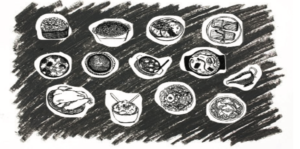Recently there have been cases of domestic violence in the media, with the most commonly talked about instance being NFL player Ray Rice. In Feb. 2014 he punched and knocked out his then-fiancee Janay Palmer in a casino elevator and dragged her unconscious body out of the elevator in Atlantic City in Feb. 2014. Video footage of the assault was released on Sept. 8, causing Rice suspension from the NFL indefinitely, as well as the Baltimore Ravens cutting him from the team the day the video was released.
The Campanil could not help but notice the problems that this incident brought up in the conversation of domestic violence.
Many people question the reasons why Janay stayed in the relationship and married him a month after. We recognize the difficulties in domestic violence, especially with its gray area of leaving and staying in the relationship.
For victims to leave their abusive partners is complicated. The victim may not have any resources, like money, emotional support, etc., to do so. The victim could be emotionally dependent on their partner, believing that no one else will love them. The victim could be psychologically traumatized from the abuse to rationalize their partner’s actions or even become detached from the violence. Children may be involved. And if the victim chooses to leave, what happens next? The victim’s life and livelihood could be at risk. It takes strength to leave the circumstances, knowing the uncertain and possibly dangerous outcomes. In fact, survivors of domestic violence hold courage and strength to move forward from their abusive partners.
The Campanil also believes that treatment between men and women is very different. People have even reached the conclusion that Janay provoked Ray into punching her. Does this sound familiar? Remember the 2009 case of Rihanna and Chris Brown? There was also talk of Rihanna provoking her then-boyfriend Brown to hit her then.
There appears to be a split over provocation and who should take blame for their actions, particularly against women. Men receive more protection and access to damage control in the media, while women are blamed. There is more humiliation for women than for men because of victim blaming and shaming. Although we do not know the cause of those incidents, there is no excuse for partners to resort to violence.
The Campanil also recognizes domestic violence in different communities, like the queer community. A lot of people assume that queer relationships would not have these problems. However, according to the CDC’s recently revised study in 2013, there were high percentages of domestic violence in the queer community.
Men even experience domestic abuse from women. According to statistics from the Bureau of Justice between 2003-2012, 24 percent of men were abused by their partners. That percentage is significant as any other. Importantly, there is a still a dominant person that chose to abuse their partner, regardless of gender or sexual orientation.
The Campanil knows that domestic violence can happen to anyone. We know of the wrong in victim blaming, shaming, and the action itself. We acknowledge the sensitivity and care that comes along with it, especially for victims and survivors of domestic violence. Domestic violence is not a personal issue, it is one that must be discussed within our community to make aware those problems that we see in not only Ray Rice’s case, but in many of these cases.


